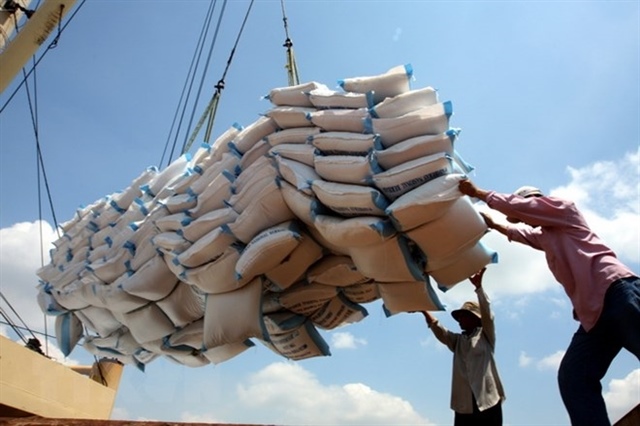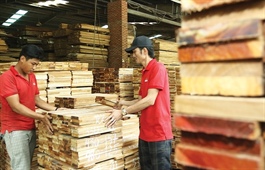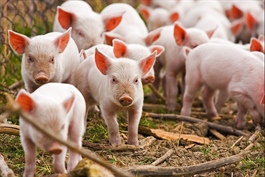Pig re-herding and lunar July push hog prices down
Pig re-herding and lunar July push hog prices down
The efficient re-herding of local pigs, imported pork and decreased meat consumption in lunar July have pushed hog prices down, contributing to stabilising the consumer price index.

Nguyen Van Ninh, who owns a farm with some 2,000 pigs in Hung Yen Province, sold his pigs for VND76,000 (US$3.2) per kilo.
"The prices have dropped recently. Compared to May when the prices reached their highest in the market at more than VND100,000 per kilo, the prices are three fourths," he told Viet Nam News.
A representative in Ha Nam poultry and cattle wholesale market in the eponymous province told local media that: “The pig supply has increased a lot. On average, about 500-600 live pigs, or 15 per cent higher in quantity, are traded in the market”
Nguyen Van Trong director of the Department of Livestock Production, Ministry of Agriculture and Rural Development (MARD), said he expected live hog prices would drop to VND70,000 per kilo by the end of the year, more than 20 per cent lower from the high prices at some times of the year.
“By the end of the third quarter or the beginning of the fourth quarter, we can balance the supply and demand and basically stabilise the price of hogs in the local market," Trong told Viet Nam News.
His department said by the end of July, the total pig herd reached about 25.18 million, 81.9 per cent of the total before the African swine fever first hit on January 1, 2019. Compared to January and April 2020, the herd was 11.6 per cent and 4.2 per cent bigger, respectively.
Twelve provinces and cities reported the rate of re-herding and increase of more than 100 per cent with an average rate of 118.3 per cent, nine provinces and cities reported an average rate of 94.3 per cent in re-herding and 20 provinces and cities reported an average rate of 81 per cent while the other 22 provinces and cities reported the average rate 55.5 per cent.
Sixteen pork enterprises in Viet Nam shared the plan to have 5.36 million pigs by Q4, up 68 per cent from Q1.
Another reason that made the hog prices fall was the advent of lunar July, which falls from August 19 to September 17 this year, known as Vu Lan month when more families in Viet Nam eat vegetarian dishes for the entire month for religious reasons.
Vice-Chairman of Dong Nai Livestock Association, Nguyen Kim Doan, said: “As people become vegetarian this time of the year, consumption of pork has decreased.”
“The return of COVID-19 also makes the price of pigs decrease as the consumption decreases while the supply increases from the imported products," he added.
Seeing the lower prices of live hogs, MARD officials noted breeding pigs were still expensive.
According to the ministry’s reports, by July, the total sow herd reached 2.93 million, an increase of more than 7.7 per cent compared to the beginning of the year. The country also had more than 56,000 breeding boars, enough for the extension of the herd.
MARD deputy minister Phung Duc Tien said as the period from May to September last year was the peak period of African swine fever, local pig farms restricted breeding, affecting the supply in 2020. At the same time, some big breeding enterprises have restructured and limited breeding.
“The current price of breeding pigs is very high at VND2.5 million to VND3 million per head," he said, adding, “as it takes six months to have enough pig breeds, the prices of pig breeds will decrease later than the price of live hogs in the market.”
He said the upcoming reduction of breeding pig prices would lead to lower production costs, lower prices for live hogs.
“We expect live hog prices from now to the end of the year to fluctuate around VND70,000 per kg,” he said.
“This price level will both ensure the development of domestic pig farms and the interests of local breeders.”


























